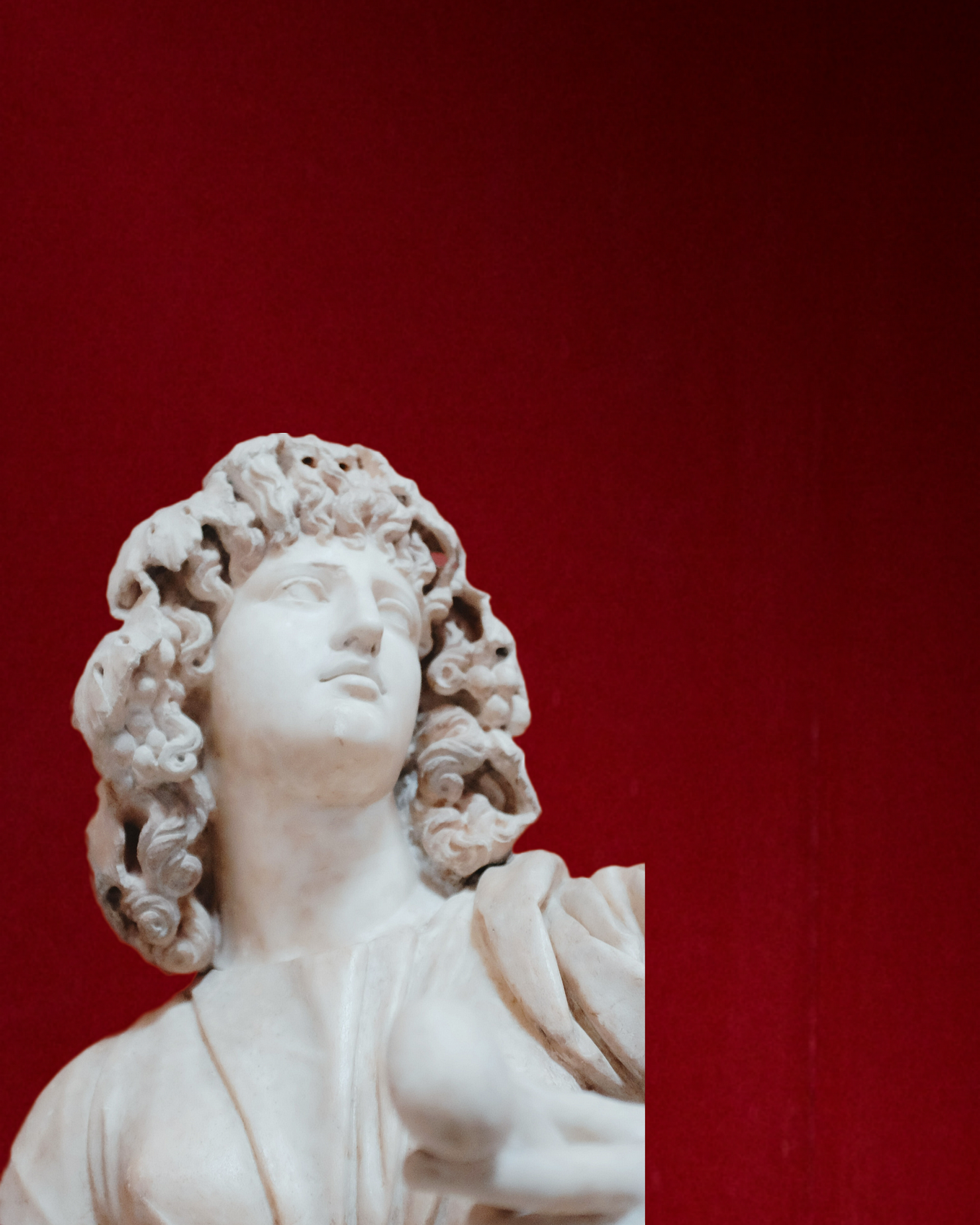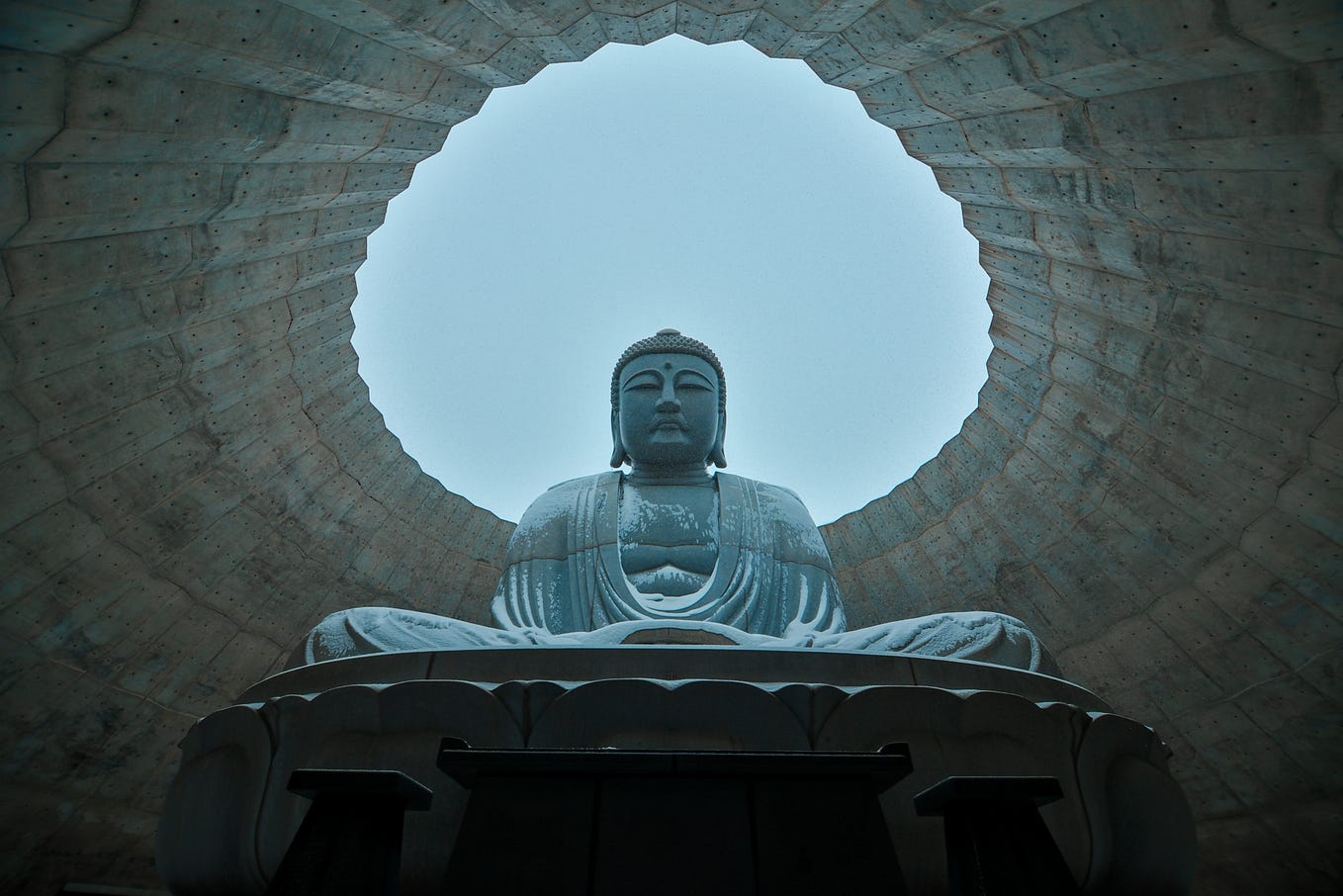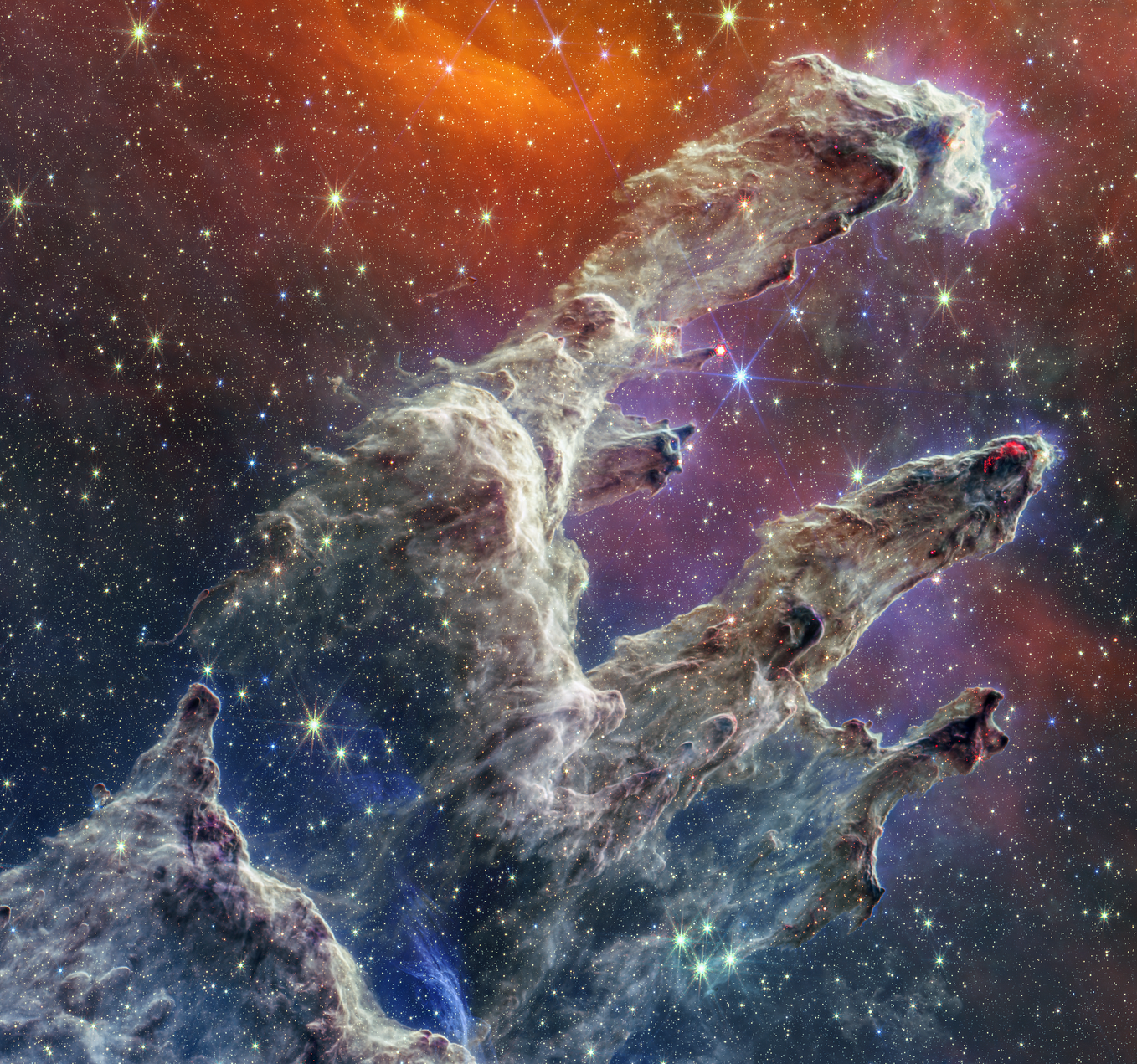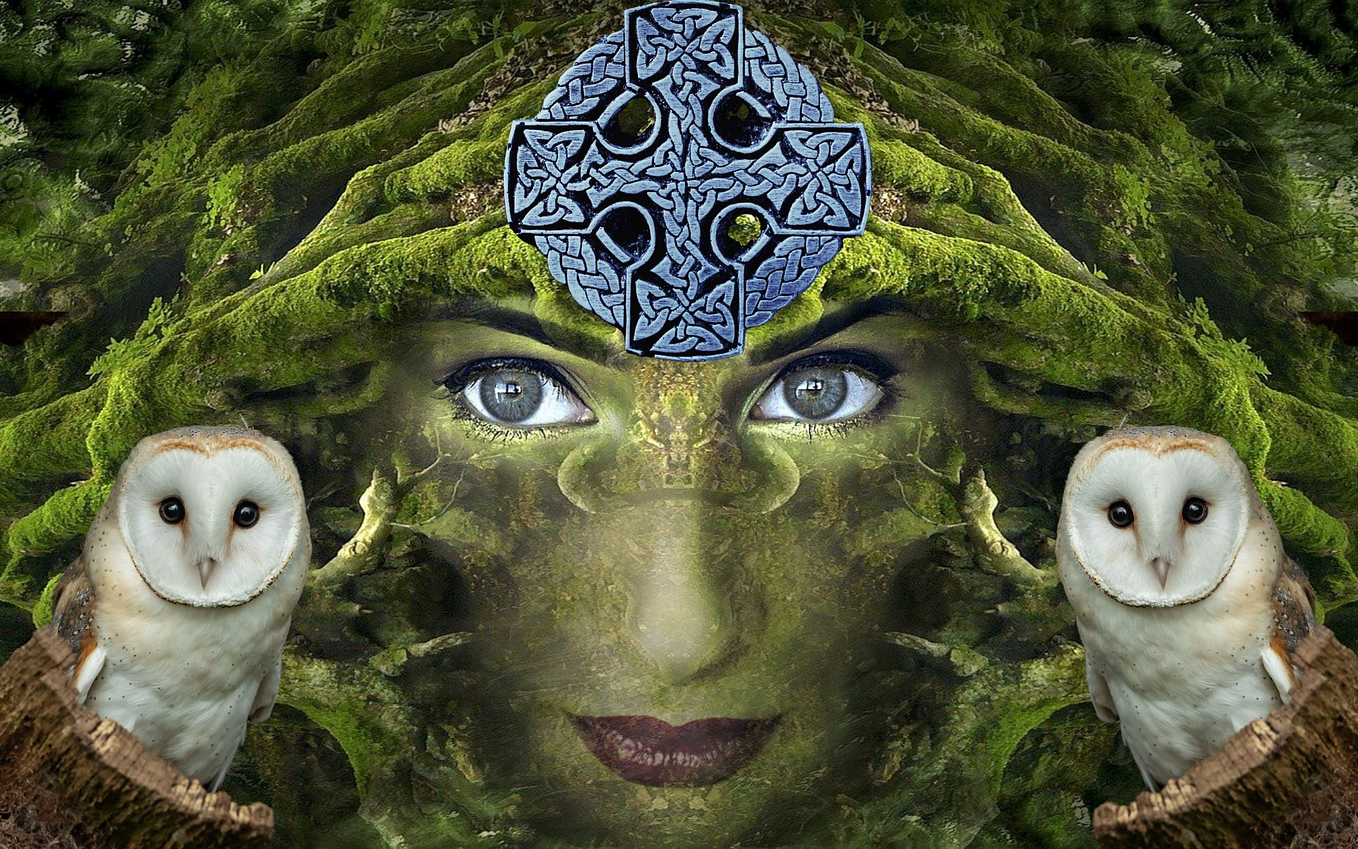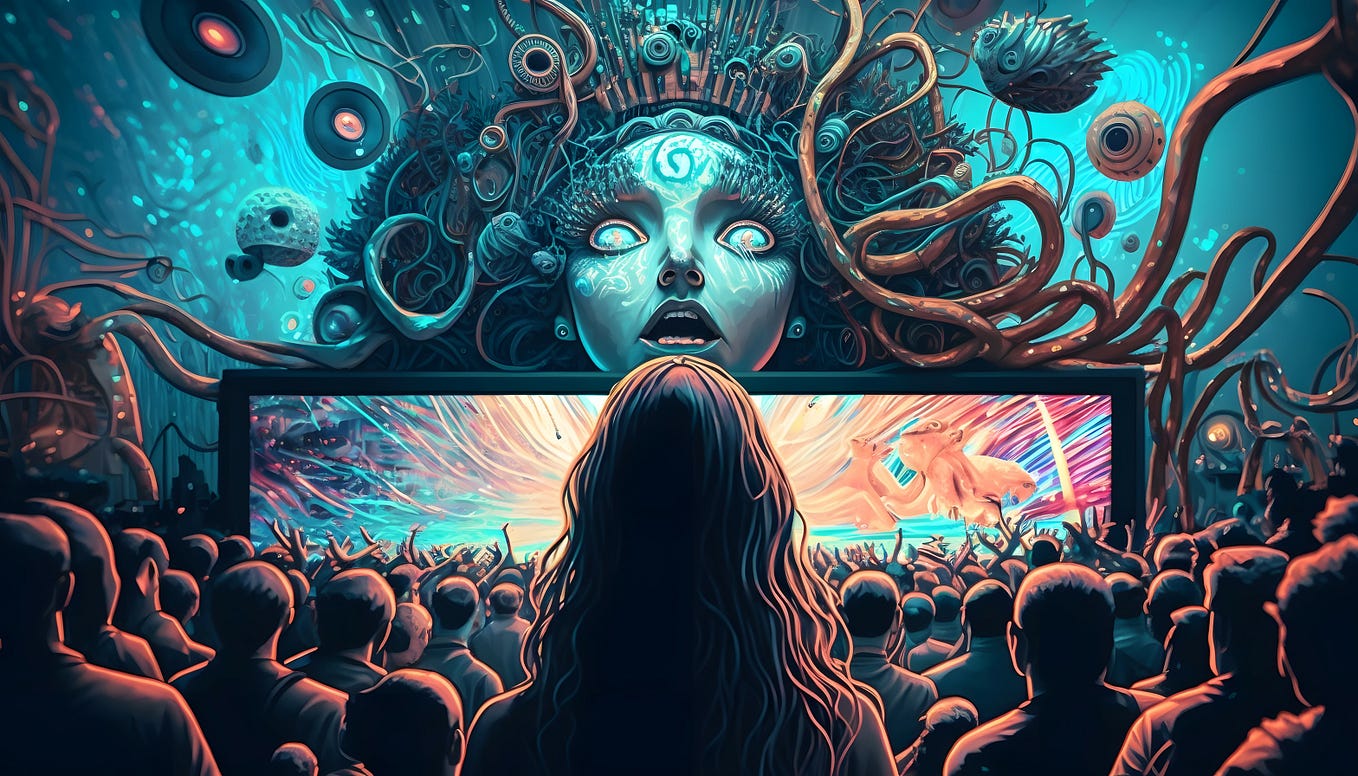—
Five eye-opening rebuttals which upgrade your whole perspective on the value of a human lifetime.
“The Buddha was an extremist who preached nihilism.”
This sentiment echoes in the texts of Jainism, a little-known tradition which went through a big revival in the Buddha’s time.
But it’s also a big reason why many Westerners are put off today.
While scientists like Einstein called it “the religion of the future” and even the British Empire was fascinated excavating its ruins — the common person is easily put into a slump by it!
- No mention of a supreme deity to have devotion to.
- No mention of a soul.
- A focus on suffering and its transcendence.
What on earth (literally) is there to be excited about here?
What’s worse, much of the material in the English language is subtly colored with a colonial lens.
Frustrated with Christianity, many thinkers in the previous century projected their search for a “perfect” and opposite doctrine onto Buddhism.
It’s for this reason that the more expanded teachings of the Buddha, the Mahayana and Vajrayana, are routinely slandered by Western academics as being a mere “invention” by later Indians, and not his actual words.
They, living in a culture where something simply didn’t happen unless it was written down and clearly documented, do not realize that North India’s heritage went up in flames, until only ruins remained.
Furthermore, Dharma and its transmission has always been mouth-to-ear, not book-to-book.
One master orally transmits the context of a text to a disciple, rather than try capturing it in dead language to expend energy deciphering later.
It is for this reason that the source material of the arguments I’m about to present are considered by traditional Buddhists to be valid — because there is simply no way the Buddha gave merely “public” lectures in the form of the Pali cannon, and nothing for his advanced disciples.
The man was omniscient.
He could have produced a million religions for a million different kinds of sentient being. What he told the world in publicly recorded discourse was not the same thing he would have said to someone in private, on the verge of a higher breakthrough.
Furthermore, he isn’t the only Buddha.
He clearly stated there have been countless omniscient ones before him, and many will come in the future. But the glaring pot hole of Western understanding — considering Theravada to be the only “real” form of Buddhism — is this: he taught the end of suffering, but why not the method to become the same as him?
It is this higher path of the evolution of consciousness — to complete omniscience rather than just removing the source of suffering — which answers Buddhism’s detractors most effectively.
“No God.”
In an eon where wars would be fought over who’s god is the realest, the Buddha would have hesitated to speak on such a matter. Let alone solidify it into a conceptual doctrine to cling to!
When asked about the existence of a supreme ruler, he merely refused to comment — or replied that the person curious was discussing a fantasy while pierced by the terrible arrow of suffering.
His compassion was such that he wanted to remove the wounds of existential misery first and foremost.
But does this mean the Buddha, or those at the end of his path, are ignorant of what the other spiritual traditions of earth call a creator?
It may be more likely that Buddhism chooses to leave un-defined what can never be put into words!
Especially if it could lead to harm, or a laissez-faire attitude to spiritual development that abdicates responsibility to vague “grace.”
Regardless, Western commentators on Buddhism have often said the Mahayana turned the Buddhas themselves into god-figures.
Words such as Dharmakaya, “the body of supreme reality,” or Dharmadhatu, “the realm of ultimate reality” which describe the one mind of all Buddhas past, present, and future — is sometimes cast as a parallel to the Christian godhead or Hindu Brahman.
While texts like the Jewel Ornament of Liberation clearly state that a Buddhist should cultivate devotion to this formless, ultimate wisdom-Buddha — the concept falls short of (or rather, goes way beyond) a creator-god in the Abrahamic sense.
This devotion is toward something that is said to exist on every atom, according to the famous Prayer for Good Conduct. Other texts say there’s a Buddha atop the crown of each sentient being’s head, blessing them.
And while god is seen as an entity, often with a personality, Ultimate Reality, which the Buddhas dwell in, is nothing but itself. And everything.
It so beautifully is captured in the Buddhist, Hindu, Sikh, and Jain concept of Om — the primordial, yet ultimate, highest reality, infinite, yet with one unity. And this which theistic Hindus and Sikhs take to be their divine is considered one with the Buddhas!
So every advantage that a theistic path offers — the warmth of being constantly guided and loved, an aspiration to reach something profound, and a sense of smallness — can actually be found in “non-theist” Buddhism.
Not only that, but Buddhism makes a gigantic claim for itself.
It leads to something called unsurpassed, perfect awakening. It does not lack knowing, of anything.
Would such a thing be ignorant of the truths expressed in other paths?
“No Soul.”
In the Buddha’s time, seekers were getting caught in the trap of clinging to a sense of the soul — entirely constructed by their grasping — rather than finding the real deal. Or the lack of it.
Which is the point of Buddhist meditation! Discovery, not dogma. In fact, the Buddha’s final words included admonition to his disciples for turning non-self into a belief.
And those seekers from rival traditions — mostly Vedanta — have certainly not remained stagnant for 2,500 years. Buddha Dharma made a meteoric impact on the spiritual landscape of India, from its famous tradition of debate.
Enlightened sages discussing the fine points of various paths to liberation is not something to be taken lightly.
It is said by Tibetans that if you were to go back in time and open an ancient Sanskrit text without looking at its cover, you wouldn’t know if it was Hindu or Buddhist.
Even Atisha, the world-famous Indian Buddhist Guru of the 11th century, said at one point that he was the only one in the whole Indian subcontinent that could definitively distinguish what was pure Buddhism or not!
This similarity is echoed in Vajrayana terms which I’m certainly not qualified to really comment on: Buddhanature; Rigpa; Mind of Clear Light.
However, both Advaita and Buddhism have something called “pointing out the nature of mind.” The only difference is that Buddhism never defines this as a final self to identify with and grasp to, and does not merely “rest” in some state of awakening, but seeks the certainty of a wisdom that cuts ignorance forever.
You can “just be” as unshakably as you like, but when the tidal waves of habit and confusion come, perhaps even after reincarnating, will you have the definitive antidote?
It is skilful to discover higher and higher levels of your “Self,” even for a Buddhist. But it’s not fine to stop there, taking it to be the last destination!
“Life is Suffering.”
The first teaching the Buddha gave was a wakeup call. But why don’t we remember the second?
There is an end to misery. If this had been marketed today, backed up with proof that it works, it would be like finding the cure to cancer.
To know that millions of contemplatives for thousands of years have actually proven the Buddha correct is itself a blessing. India alone produced such a galaxy of saints and sages that practically every village has a shrine or historically significant pilgrimage spot for a great soul, deity, or energy-vortex.
But the greatest success of this ancient civilization was producing a form of its Dharma that could be applied in any culture or climate — provided its inhabitants were open-minded enough to fully explore it.
Suffering was made the starting point of the path not to depress you — but to relate to your deepest issues.
To our universal, collective, most common concern. And that’s why this system was able to fuse with so many world cultures throughout history — even the once war-like Mongolians and Greeks.
Regardless, the apparent life-denial of Buddhism is strongest here.
If this world is merely the result of past actions, and we’re here to suffer the fruits of them, what is there to celebrate about being here?
Well, for one, we get the fruits of our good actions.
In Mahayana, we are instructed to rejoice at the accomplishments and positive energy, the “good karma,” of others. It is believed that tuning in to this actually absorbs a fraction of it into your own mindstream -and so is the easiest way to accumulate the positivity you need to awaken.
This is most certainly not a dreary resignation to focusing on suffering!
It is an exhortation, a command even, to rely on all the good in this world. This is considered a root factor of the path!
Furthermore, for those who want the full awakening of a Buddha, the ones called Bodhisattvas — there is a vow to bring ultimate happiness to every single sentient being, in every corner of space.
This is the focus and the ultimate goal, and the only way you can accomplish it is with the power, foresight, and love of a full Buddha.
But this still doesn’t solve the argument.
The Buddha’s actual solution to this conundrum of suffering is a fascinating one. He says we suffer due to clinging afflictions such as attachment and aversion — which themselves come due to a misapprehension of reality.
We consider our “selves” to be what we need to protect and nurture, stimulate and cherish.
But anything that creates a boundary creates a contraction, a fissure, a friction in the cosmic fabric of existence.
And guess what happens when the light of awareness is cast onto this misunderstanding of reality, seeing it entirely, and freeing us of it, bit by bit?
Bliss indescribable with words, let alone communicable with concepts.
This is the result, the fruit, of the path that begins with a diagnosis. Don’t mistake the two!
“If There’s A God, It Doesn’t Care.”
More theistic paths have suggested that we’re here to simply fulfil our desires. Karma is the creator and the Creator is within the force of karma; so until we exhaust our wants and desire only Her, the drama will continue.
Some logically go on to blame this omnipresent Source for what it’s doing: keeping us in ignorance. Allowing suffering to continue.
So what does someone on the Bodhisattva path do?
Vow to remove the ignorance of every single being in existence. Vow to remove suffering & bestow permanent happiness onto every creature.
Which begs a fascinating question, given that both the Buddhas and theistic enlightened sages of other traditions are definitely “enlightened.”
If the basis of Mahayana — and hence Buddhahood — is to do what God supposedly can’t, does that mean the Buddhas are a sort of cosmic terminator, an invincible force of good that’s greater than any deity?
This question itself is invalid, because it’s based on Abrahamic models of the divine.
Theists — of the Sikh and Hindu traditions at least — would say that suffering is not just “God’s play,” but something that we also created. Remember, all Dharmic traditions centre karma and co-creation; co-divinity. Thus, a separate “evil” god-figure who doesn’t truly care is not something that can be blamed!
The way we think of divinity is so bound up with the doctrine of Christianity with its theodicy problems that it can be hard to think straight when exploring Dharmic traditions.
You need to clean your lens first, by learning from a different civilizational perspective.
Start with this.
To relieve suffering, it is believed the Buddha ‘emanates’ bodies, forms, books — even material objects such as bridges — from its permanent, transcendent Dharmakaya body into what’s called a Nirmanakaya, a ‘creation-body.’
The historical Buddha is believed to be a Nirmanakaya, as is every single letter of the Dharma you read, every inspiring sculpture or painting of divinity, and every qualified, realized spiritual teacher. Of all faiths.
And these are all for the sake of alleviating the suffering of beings and bringing them to awakening.
Furthermore, Hindu and Sikh traditions believe in avatars, or ‘descents’ of the highest divinity into human form, for the sake of teaching sentient beings and relieving their suffering.
Now, if the Buddha is all-pervasive, within every being, and the Hindu supreme deity is called Vishnu, or vishwa-anu, ‘everywhere-within,’ why on Earth should there be any conflict between these systems, on a religious or doctrinal basis?
Buddha was considered an avatar by ancient Hindus. And Buddhists had a symbolically blue-as-Vishnu deity named Vajradhara who represented an archetype of the supremely awakened primordial teacher-guardian.
This is not “digestion” of one system by a predatory culture, as Abrahamic religions have done to every single indigenous society they came across. This is an example of the central statement of the Vedas: ekam sat, viprah bahuda vadanti. One truth, many expressions.
It may very well be that in a world strangled by a Biblical, Prophetical, Fundamentalist conception of the divine, the Buddha’s wisdom will reinvigorate the concept of “God,” just as it did in ancient India, despite not relying on belief in a God-figure in the first place.
“Everything is Empty.”
The trickiest philosophy in the world to understand might very well be Buddhist emptiness.
- One side of the coin is that everything in existence is an effect from past causes. And will be a cause now, too. Ad infinitum, karma goes on and on!
- If you actually take a closer look at what you’re neuroses are attached to — there is nothing there from its own side except this amalgamation of causes and conditions.
Our mind projects a story onto what’s happening, and grasps onto objects as inherently containing an extra “self” or “essence” from their own side.’
Except it’s a primordial assumption borne of our attachment-influenced perceptions.
So, if you were to put it in language (which is sometimes useless for a philosophy like this) everything you see is just a wave coming out of the ocean. Every wave is just a collection of molecules. Every molecule, a wavelength of energy. And energy is never stagnant.
Therefore, nothing is real as you perceive it.
Everything depends on everything else, arises out of everything else. There is no individual “self-ness” in the final analysis!
And instantly — we fall straight down into the nihilism that Buddhism is blamed as promoting. And the biggest mistake is made.
“So nothing means anything inherently! Might as well ignore cause and effect, then.”
We intellectual pygmies forgot to consider that if the mind is the only producer of meaning, that means you can dream up the greatest reality possible.
And it has a name: Buddhahood. Supreme enlightenment that can serve the welfare of all sentient life for all time and space.
I don’t know about you, but that sounds like the most meaningful thing that a human mind can possibly grasp!
The lack of inherent meaning gets filled by your unconscious meanings projected into existence. But what if you could create the most conscious meaning ever out of reality?!
Thus emptiness, the lack of self-ness within phenomena, becomes not a kill-joy but the opening of the most beautiful, divine possibility that could ever be!
These criticisms have existed for thousands of years.
What they reveal is not so much a lack inherent in this or that tradition — but the ever-dangerous human nature to project our difficulties onto the path we’ve chosen.
Buddhism is not for everyone.
It was taught in order to fruition the conscious potential of humanity, but to a certain extent, all spiritual traditions do that. This is why Buddhists aren’t missionary in the sense of identarian conversion — their mission is merely to help all beings attain enlightenment.
Buddhism is demanding in proportion to the results it promises.
Rather than debate ideas of supreme truth, it’s about upgrading your consciousness (software) and nervous system’s inner energy flow (hardware) to be able to perceive more.
Sure, there is a huge emphasis on logic and analysis. And many concepts, lists, and categories to digest into our experience of processing reality better.
But denying the beautiful and profound potentials of human life is the last thing Buddhism seeks to do. It merely exhorts us to be wiser and wiser, until even the supposed “denial” of life is seen to be the delusion it is.
And if dissolving impermanent attachments in order to provide deeper security is a denial of life to us — perhaps we need to re-evaluate and decide exactly what it is we & our culture are alive for.


